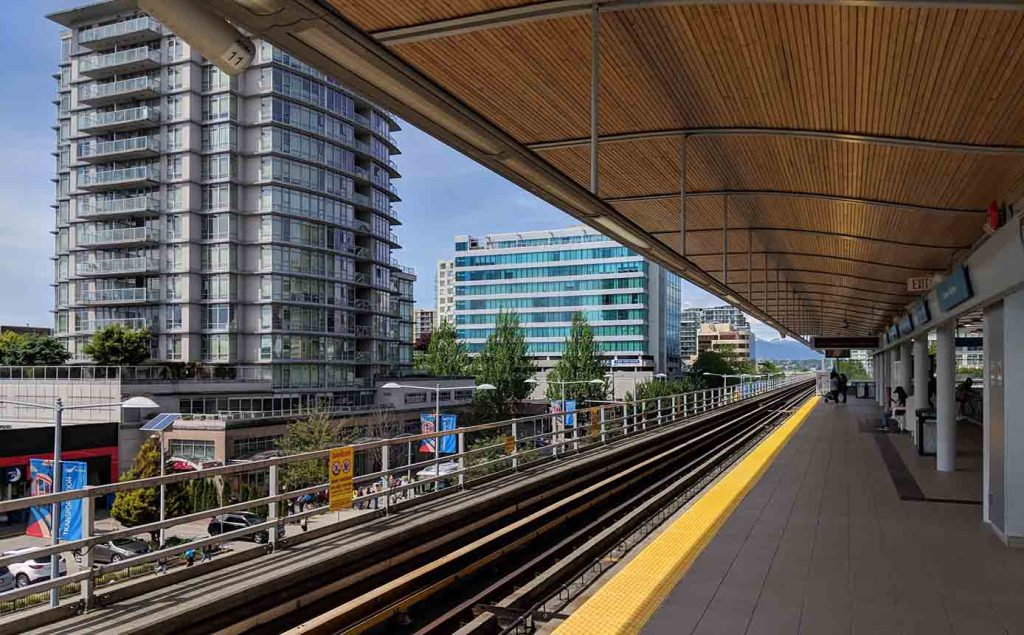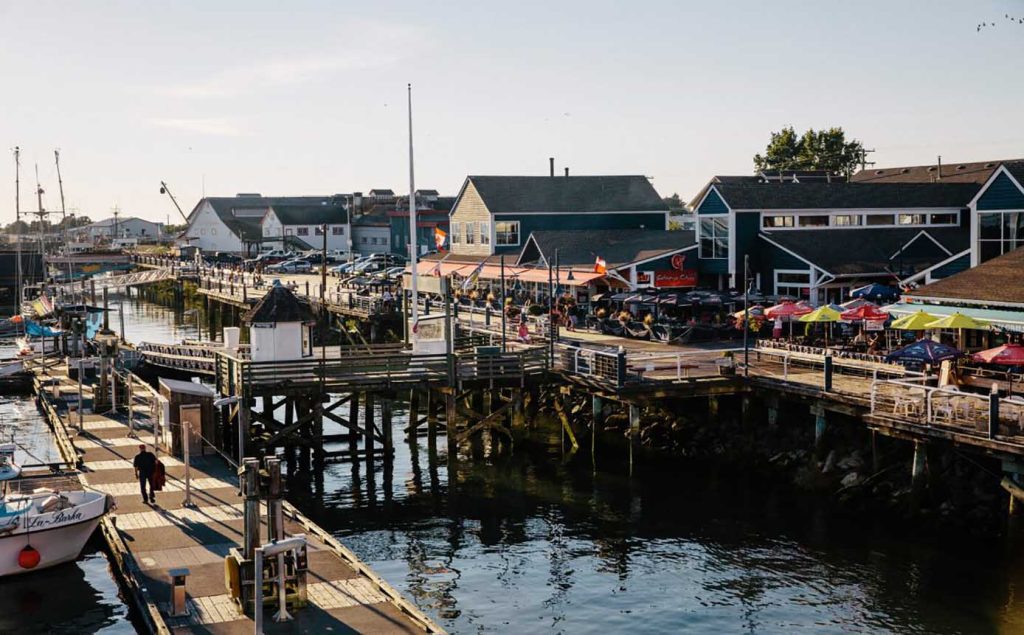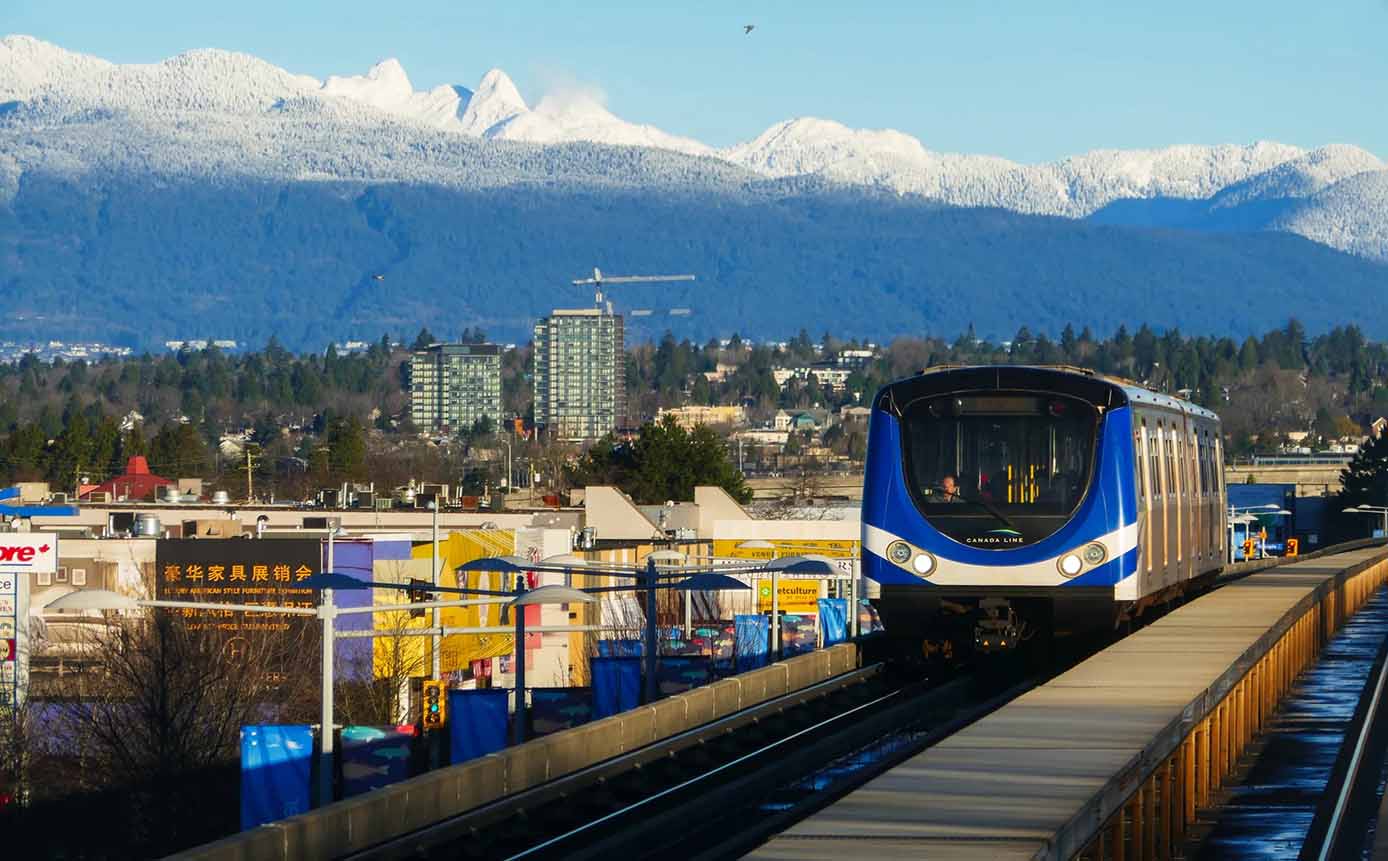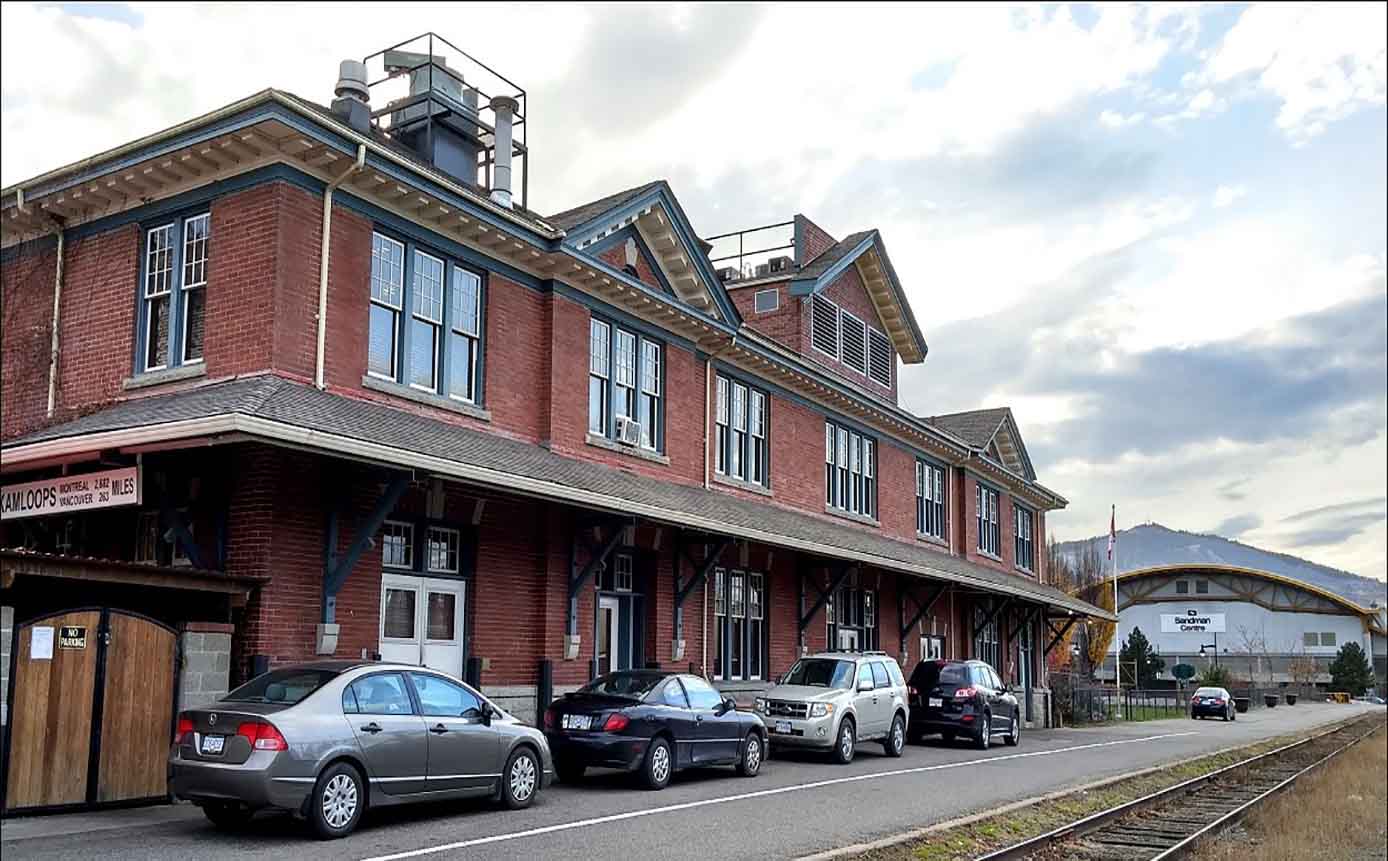There are certain journeys in life that are more than just ways of getting from one place to another. They are experiences, moments that carve themselves into your memory with a mixture of landscapes, sensations, and emotions. For me, train travel has always carried that kind of weight. Perhaps it’s the steady rhythm of the wheels on the tracks, or the way time feels suspended when you’re sitting by the window, watching the world unfold.
When I first moved to Canada, I was overwhelmed by the sheer size of the country. Distances that seemed manageable on a map stretched into vast realities of forests, rivers, and cities scattered far apart. While flights offered speed, I found them sterile; highways felt exhausting. But the train—that was different. The train was slower, yes, but it was also human, intimate, and scenic.
My particular fascination led me to the Richmond Scenic Line, a lesser-discussed but deeply rewarding train route that begins in Richmond, British Columbia. Richmond itself is an intriguing place: a city woven between waterways, multicultural communities, and a rich history tied to both industry and immigration. Sitting just south of Vancouver, Richmond has a character all its own, and traveling its landscapes by train felt like the perfect way to connect more deeply with this place.
In this article, I’ll take you with me on this journey—not just the physical route, but the feelings, reflections, and discoveries along the way. I’ll share with you the sights that stirred me, the stops worth your time, the meals that delighted me, and the practical details you’ll need if you ever plan to take the same path. If you’ve ever wondered why train travel in Canada deserves more attention, Richmond is an excellent place to start.
Boarding the Train: The Journey Begins
The Atmosphere at Richmond Station
There’s a moment of anticipation whenever I enter a train station. It’s quieter than an airport but charged with its own subtle energy—families hugging goodbye, tourists fumbling with luggage, locals heading to familiar destinations. Richmond’s connection to regional and intercity rail is tied closely to its proximity to Vancouver, so much of the journey begins by linking through central stations such as Pacific Central in Vancouver. From Richmond, SkyTrain lines like the Canada Line take you straight into Vancouver in under 30 minutes, making the transition from suburban calm to urban bustle seamless.
When I set out on my Richmond Scenic Line journey, I began early in the morning. The air was crisp, the city not yet fully awake. I had pre-booked my ticket through VIA Rail’s official website—a straightforward process that let me choose between Economy and Business class seating. Prices vary depending on season and availability, but for a standard Economy ticket between Richmond/Vancouver and key stops along the scenic stretch, you can expect fares starting from CAD \$50–\$80. Business class, with its added comfort and complimentary meals, often ranges around CAD \$120–\$160 for short regional segments.
For those who prefer third-party platforms, I also recommend Expedia Canada, Trip.com, or Rail Canada. Each provides reliable booking options, often bundling tickets with accommodations or additional tours. If you’re like me and enjoy planning meals or activities in advance, platforms like Klook sometimes feature discounted entry tickets for attractions in Richmond and Vancouver, which can be paired neatly with your rail trip.
Luggage and Onboard Comfort
Boarding was smooth. VIA Rail generally allows two carry-ons (up to 11.5 kg each) and one larger checked bag (up to 23 kg) included with most fares. Compared to the stress of airline restrictions, this flexibility already made me feel more relaxed.
Inside the train, the seats were spacious, the overhead racks generous, and the atmosphere calm. Business class offers wider reclining seats, individual power outlets, and access to lounge-style dining, but even in Economy I found the space far more comfortable than a plane. I settled into my seat by the window, excited for the views that were about to unfold.

The Scenic Richmond Line
Watching the Landscapes Shift
As the train pulled away, Richmond’s urban mosaic quickly gave way to a blend of waterways and greenery. Richmond is built on a series of islands in the Fraser River delta, so almost immediately the journey is punctuated by glimpses of water—shimmering channels, bridges arching across them, and fishing boats heading out with the morning tide.
The scenery shifted with a natural rhythm: clusters of modern high-rises in central Richmond fading into older residential neighborhoods, then into marshlands and fields dotted with farmhouses. I remember feeling that sense of suspension, that unique train-travel sensation where you’re not rushing but gliding. The Fraser River, broad and commanding, often appeared alongside the tracks, reminding me of the lifeblood that made this city thrive.
Seasons Along the Line
I’ve taken this journey in different seasons, and each time felt new. In spring, cherry blossoms peek out in neighborhoods near Richmond’s city center, softening the urban edges. In summer, the wetlands are alive with birdsong, and the skies stretch endlessly blue. Autumn brings fire-colored leaves along the tracks, while winter cloaks the landscape in mist, lending it a dreamlike quality.
Sitting by the window, I found myself reflecting not just on what I saw but on how it made me feel—calm, thoughtful, connected to something larger than myself. That’s the intangible beauty of train travel: it creates space for reflection, something that modern travel often forgets.
Highlight Stops & Attractions Along the Richmond Line
While the train journey itself is enchanting, Richmond’s surrounding attractions make it worth hopping off, exploring, and sometimes even planning a multi-day stay. Here are the highlights I discovered, each one adding its own character to the experience.
Steveston Village
- Location: South Richmond, about 20 minutes by bus or car from central Richmond Station.
- Why It’s Special: Steveston feels like stepping into another era. Once a bustling fishing port, it retains a heritage charm with wooden boardwalks, fishing boats, and old canneries. It’s also famous as a filming location for TV shows like Once Upon a Time.
I wandered the docks where fishermen sold freshly caught salmon and spot prawns. The air smelled of salt and seafood, and small cafés invited me in with the promise of hot coffee and pastries. Walking through Steveston, I could sense how deeply fishing culture is tied to Richmond’s identity.
- Costs: Free to walk around; seafood meals in local restaurants range from CAD \$15–\$30.
- Tip: Arrive early in the morning to avoid crowds and see fishermen unloading their catch.
Gulf of Georgia Cannery National Historic Site
- Location: 12138 Fourth Ave, Steveston, Richmond.
- Admission: Adults CAD \$12.50, youth and seniors discounts available. Tickets can be booked via Parks Canada’s official site or platforms like Viator.
This museum is housed in a former cannery, one of the largest in BC during its peak. Inside, I was guided through exhibits showing the history of the salmon canning industry, complete with machinery, preserved tools, and stories of immigrant workers.
What struck me most was how global the story felt—Japanese, Chinese, and Indigenous workers all contributed, often under grueling conditions. Standing inside that wooden structure, I felt the echoes of their labor and resilience.
Minoru Park
- Location: 7191 Granville Ave, central Richmond.
- Why It’s Special: A tranquil oasis in the middle of the city. Minoru Park has landscaped gardens, ponds, walking paths, and a small chapel tucked away.
I strolled along the water, watching ducks glide lazily across the pond. Photographers were scattered around, capturing autumn leaves reflected on the still water. Minoru Park doesn’t cost a cent, but the peace it offers feels priceless.
- Tips: Best visited during late afternoon when the light softens and the park glows golden.
Richmond Night Market
- Location: 8351 River Rd, near Bridgeport Station (easy access from the train and SkyTrain).
- Seasonal Operation: Typically May to October.
- Admission: CAD \$8–\$10 at the gate, or slightly less if purchased online via platforms like Eventbrite.
This is not just a night market—it’s an event. Food stalls stretch endlessly, offering skewers, bubble tea, Korean fried chicken, Japanese takoyaki, and endless creative desserts. There are carnival games, live performances, and an atmosphere that feels both festive and uniquely Richmond.
I spent over three hours wandering, snacking, and soaking in the energy. It reminded me that Richmond is one of the most multicultural cities in Canada, and its food scene is a direct reflection of that diversity.
Iona Beach Regional Park
- Location: Northwest of Richmond, near Vancouver International Airport.
- Why It’s Special: This park is defined by its 4 km jetty that stretches out into the Strait of Georgia. Walking it feels like stepping into the sea itself.
The first time I visited, I walked the jetty under a grey sky. The wind whipped around me, seabirds called overhead, and the city behind me seemed to shrink away. It was one of the most meditative experiences I’ve had in Richmond.
- Cost: Free.
- Tip: Bring water and a jacket—wind conditions can change quickly.
The Food & Dining Experience
Richmond has one of the most dynamic food cultures in Canada. Onboard the train, meals are convenient but modest. Stepping into the city, however, opens a culinary wonderland, especially if you love Asian cuisine.
Some personal favorites:
- Aberdeen Centre Food Court (4151 Hazelbridge Way) – Affordable Asian eats, dishes from CAD \$10–\$15.
- Fisherman’s Terrace Seafood Restaurant (inside Aberdeen Centre) – Famous for dim sum, typically CAD \$25–\$40 per person. Reservations can be made through OpenTable.
- Pajo’s Fish and Chips (Steveston Village) – Classic, casual seafood, around CAD \$12–\$18 per portion.
Dining here feels like a journey in itself. Every meal told a story, from Cantonese family traditions to Japanese-inspired seafood innovation.
Cultural Encounters
Richmond is not just landscapes and food; it’s also a cultural crossroad. Festivals like the Steveston Salmon Festival (July 1, Canada Day) celebrate fishing heritage with parades, barbecues, and community spirit. The Lunar New Year celebrations in Richmond rival those in Vancouver’s Chinatown, with lion dances, lanterns, and fireworks.
Experiencing these events made me feel woven into the community, even as a visitor. They reminded me that travel isn’t just about what you see—it’s about the people you meet and the stories you hear.

Practical Travel Tips
- Train Tickets: Book via VIA Rail (viarail.ca), or third-party platforms like Expedia.ca, Trip.com, Rail Canada.
- Attractions & Experiences: Use Parks Canada, Klook, or Viator for tickets.
- Restaurants: Reserve via OpenTable.
- Accommodation: Options range from Airbnb homes in Steveston (CAD \$120–\$180 per night) to hotels like the River Rock Casino Resort (CAD \$200–\$300 per night, bookable via Booking.com or Expedia.ca).
Suggested Itinerary:
- 1 Day: Train ride, Steveston Village, Gulf of Georgia Cannery, seafood dinner.
- 2 Days: Add Richmond Night Market and Minoru Park.
- Weekend: Include Iona Beach and day trips into Vancouver.
Reflections on Train Travel in Canada
What I carry most vividly from my Richmond Scenic Line journey isn’t just the checklist of sights—it’s the feeling. The calm of watching the Fraser River slide past, the laughter in the night market, the salt-scented air in Steveston, the solitude of the Iona jetty.
Train travel allowed me to move at a human pace, to be present in a way that cars and planes never do. In a world obsessed with speed, this slower rhythm felt like an act of resistance—an invitation to notice more deeply.
Richmond may not be the first place people think of when they imagine Canadian rail travel. But perhaps that’s what makes it special. It’s quieter, more intimate, a hidden gem that reveals itself only if you’re willing to slow down and look closely.
When I look back on my Richmond Scenic Line journey, I think of it as a mosaic: shimmering waters, historic canneries, bustling markets, tranquil parks, and meals that left me smiling long after. It was more than just a trip—it was a reminder of why I fell in love with Canada in the first place.
If you’re planning a visit, don’t rush through Richmond. Take the train, let the landscapes unfold, and give yourself the gift of seeing Canada not just as a destination, but as an experience.
Because sometimes, the best way to travel isn’t the fastest—it’s the one that lets you feel.

